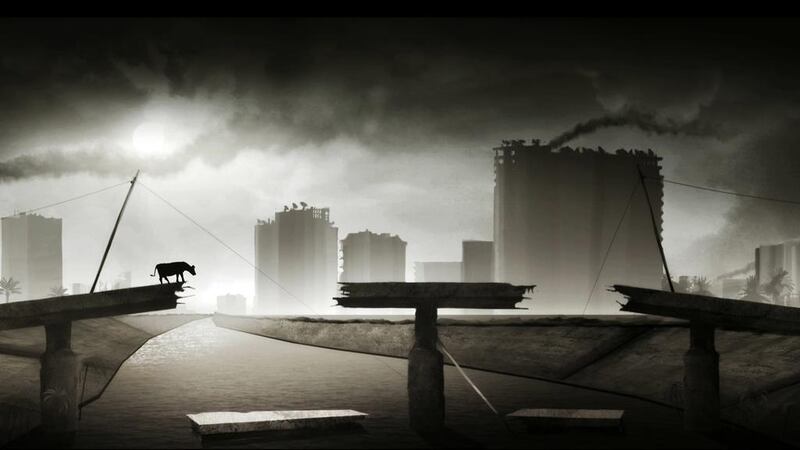On July 25, the Fumihiko Maki- designed Aga Khan Museum in Toronto opened Home Ground: Contemporary Art, a new show from the Barjeel Art Foundation. Attendees at a reception for the show included supporters from Dubai, Qatar and Houston, Texas.
Barjeel’s founder, Sheikh Sultan Sooud Al Qassemi, who attended the opening and spent a week touring Toronto, made an interesting comparison.
“It kind of reminds me of Dubai,” said Sheikh Sultan at Thursday’s inauguration. “It’s ambitious. It’s young. It’s hip. It’s up-and-coming. People are go-getters and really ambitious and they have dreams. I think it’s one of the most exciting cities in North America – and I’ve been to many cities in the United States and in Canada.”
The partnership that led to Home Ground began in 2012 at Art Dubai. Henry Kim, the museum's director and chief executive, was in the UAE to announce the launch of the AKM when the Canadian embassy set up a meeting with Sheikh Sultan.
“Sheikh Sultan said I need to bring Barjeel to North America and it has to be Toronto,” says Kim. “We are at a time, a very interesting time, when we see our connections in the Gulf have an impact outside. Partnerships emerge so quickly.
“This is a great example of an institution and a foundation finding a commonality.”
The 10-month-old museum’s permanent collection features artefacts from Muslim society dating back to the eighth century, but finding exhibitions for its temporary spaces can be more challenging.
“It’s tough,” Kim says. “Most museums have much broader collections, so you might have an Islamic-art collection once every two, three, four, five years. We are looking at a four- or five-month period where we bring in a collection and tell people something they never knew about, and there aren’t all that many exhibitions that exist.”
Enter Barjeel. Sheikh Sultan began the foundation in 2010 and the collection has since loaned to 30 institutions around the world, with Saturday marking the first showing in North America.
Home Ground features 24 sculptures, paintings, photographs and videos centred around the theme of immigration, displacement and new beginnings. A cow tries to cross a bombed-out bridge in Memorial, a video installation created in 2009 by Iraqi artist Abdel Abdin after he witnessed a similar scene in Baghdad 18 years earlier. Charbel-joseph H Boutros's installation, titled Mixed Water, Lebanon, Israel, is a glass filled with water from the two regions' mineral-water brands Sohat and Eden.
The exhibition's booklet features Dia Al Azzawi's Handala, a statue based on a cartoon of a 10-year-old boy first drawn in 1973, which has become one of the most iconic figures of the Palestinian resistance, says gallery attendee M Mohsen, a 34-year-old artist who is a graduate of the Ontario College of Art and Design and a self-identified third-generation Palestinian refugee.
"Handala is very important in our history," Mohsen says. "We wear him around our necks. He creates meaning; he describes what you go through and prescribes the need to resist. Most Palestinians my age haven't visited Palestine, mainly because they can't. I can visit because of my Canadian passport, but I grew up trying to understand the crisis in exile."
This personal connection to history was the very reason Sheikh Sultan chose to focus his collection on Arab contemporary art. “These artists, sometimes at personal risk, created works that captured the collapse of monarchies, the 1952 revolution in Egypt and the historic events of Palestine 1948, 1967, 1982 and the intifada,” he says. “This is the story of my region, so I feel more connected to these artists than I do to artists from the rest of the world.”
One of the works in Home Ground represents the interconnectedness of today's world. Twenty years after he moved from Egypt to Australia, artist Raafat Ishak, concerned with his adopted country's resettlement policies, offered to give up his place Down Under and move to another country. In Responses to an Immigration Request from One Hundred and Ninety-Four Governments, Ishak paints the flags of all the countries that refused him entry. Sheikh Sultan first saw the work at Art Dubai.
“It was from an Australian gallery from Melbourne and we brought it here to Toronto,” he says. “It has kind of traversed the entire world from a Middle Eastern artist working in Australia now showing in North America.”
• Barjeel Art Foundation’s Home Ground: Contemporary Art runs at the Aga Khan Museum until January 3. Visit www.agakhanmuseum.org and www.barjeelartfoundation.org
artslife@thenational.ae










